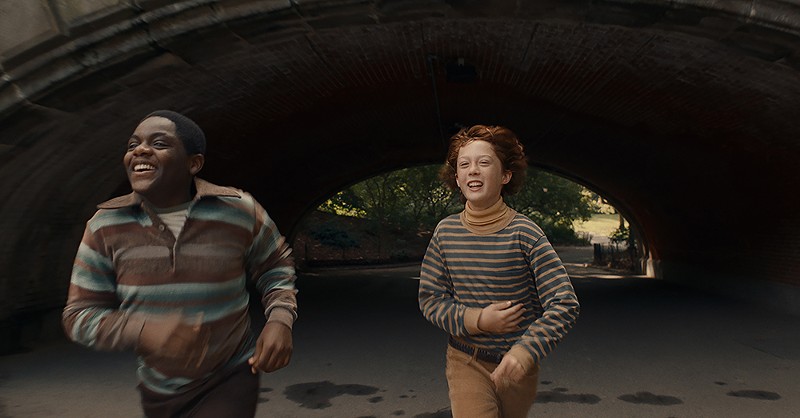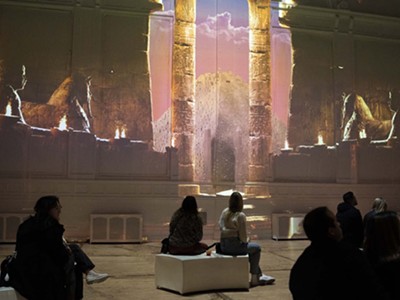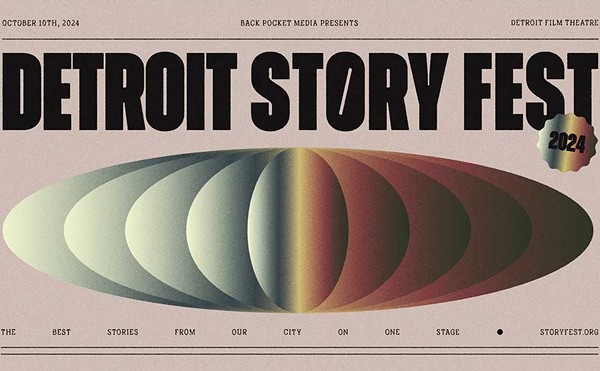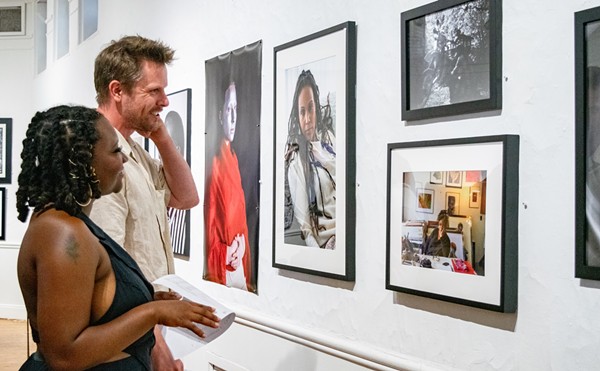With Armageddon Time, James Gray joins the ranks of his middle-aged (and sometimes senior) peers eager to revisit, whether abstractly or directly, the substance and feeling of their own respective childhoods. With Steven Spielberg’s The Fabelmans out later this month and the release of Céline Sciamma’s Petite Maman earlier this year — along with P.T. Anderson’s Licorice Pizza and Richard Linklater’s Apollo 10 1⁄2 (as well as Boyhood some years back), something seems to be in the air.
For Gray, the terrain here is noticeably more intimate than in the self-reflexive Ad Astra or his inquisitive colonial-set Lost City of Z, reflecting the realist melodramas that have made up more of his career. While the white, Jewish, working-class experience of New York’s outer boroughs is hardly new territory for Gray (see also Little Odessa, The Yards, Two Lovers, and The Immigrant), here it’s an experience he examines the very premises and contexts of head-on.
Armageddon Time opens with a string of classroom disruptions at New York’s P.S. 173, with two students cementing a quick friendship through a lightly mischievous partnership. Refusing to take their sixth-grade teacher seriously (an understandable offense), Paul Graff (Banks Repeta) and Johnny Davis (Jaylin Webb), respectively Jewish (also white) and Black, swiftly become targets of their instructor, who comes to reliably presume the worst of each. With classroom clowning a natural cornerstone of underdog social performance, but one which puts their standing in school at risk, the two find themselves locked quickly — and with no great alternatives — into a cyclical rhythm that places them decisively on the fringes of their school’s community, and alienating them from even its most basic resources. Gray’s direction leaves little question of whether racial identity — along with a kind of individualistic “bootstraps” ideology plays a part in this, with the two boys pressed to treat even their early education as one might a daytime job.
This pre-professionalist mandate creates an ambient pressure on the film’s wide-eyed preteens, though Johnny experiences it with greater severity and plainer bias than Paul does. Paul, whose mother’s maiden name might once have marked him as Jewish, experiences a freedom Johnny cannot, able to matriculate and move with relative freedom in white-dominated society. Though working class, the film makes clear that Paul benefits from privileges Johnny’s Blackness leaves him cut off from, with Paul’s social education in this reality and his efforts to account for it in response making up the film’s key arc.
At home, the pressures are little different; Paul’s mother (a steady, convincing Anne Hathaway) and frank, effusive grandfather hold close her family’s refugee history, pushing their successors — as so many parents do — to succeed (mainly in the sense of “prosper”) in ways their own forebears could never have imagined. Gray shows this hope in practice to be both understandable and double-edged, bringing harms of various stripes (physical, doctrinal, mental, and social) into the lives of the children they’re meant to buoy to relative greatness. When Paul’s elders discuss his artistic aspirations, his father (a falsely aged, often frantic Jeremy Strong) insists that The Art of Success is the only book on the subject he should care for, dismissing the potential of drawing or painting as anything more than a hobby. The film’s attention, here as elsewhere, remains on Paul’s education in a broader sense, in fields more social than academic, treating Paul’s success in school’s narrow terms the way his parents see it: as a potential passport to higher rungs of society.
Though it’s pressurized and often harsh, Gray renders Paul’s home life as comfortable in modest terms, with what look like lightly amber filters and careful, post-’70s set designs giving his domestic space a homey, lightly mothworn feel. The clear sense — embodied by Paul’s whole family, the locations, and design — is one of and recently acquired stability haunted by the specter of both recent and historical precarity. Paul’s experience of this reality — and the pressures imposed by the adults and peers around him — is mediated in vivid, viscerally convincing terms, with Darius Khondji’s camerawork feeling almost firsthand in its grip on Paul’s perceptions. Across most frames, a shallow depth of focus coats what’s not the camera’s chief object in a film of dewy gossamer; in others, as with a frightening sequence in which a camera nearly tumbles up the stairs, visions of vivid, momentary experience cut through far more sharply. Navigating the intimacy of youthful experience with no shortage of thought and care, Khondji’s camerawork (often seen in the films of David Fincher, and recently in Uncut Gems) proves essential in situating Paul’s experience in relation to those felt both immediately and broadly around him.
As elaborated by the film’s range of variously formal lessons and teachers, Paul spends the film’s running time navigating contradictory directions and examples pressing him at turns towards resistance and conformity. “Don’t make yourself objectionable for once,” his grandfather says at dinner early on; later, he insists that Paul stand up for justice in both small and large ways — even in the face of personal risk to himself. But that first lesson is delivered in a concrete instance, the second proffered in one more abstract, calling into question the substance of this supposed moral rule. Rightly, the film suggests, context is everything — and each social, professional, and academic world is accompanied by its own web of protocols and stakes accompanying adherence to the same.
But the film’s environmental spheres aren’t its only context; another key one is who, and thus who other people think, you are. The freedoms Paul has, however circumscribed, are placed constantly into relief by Johnny’s tumbling circumstances, which leave less room to succeed or fail, reliably bereft as he is of benefit of the doubt. If Armageddon Time has a lesson to offer, it’s that even if across contexts a given rule can barely hold, the grip of hierarchies proves much firmer. The film’s prevailing world of mythologized bootstraps ideology makes almost everything — and most of all one’s personal power — tremendously uncertain, even if some hold more of it than others. If Gray’s dramatizing all this as a problem for his young white avatar instead of those worse off seems questionable as a premise, he can at least be said to be framing this experience of American inequity as not just personally affecting — but as something far, far bigger than himself.
Stay connected with Detroit Metro Times. Subscribe to our newsletters, and follow us on Google News, Apple News, Twitter, Facebook, Instagram, Reddit, or TikTok.






